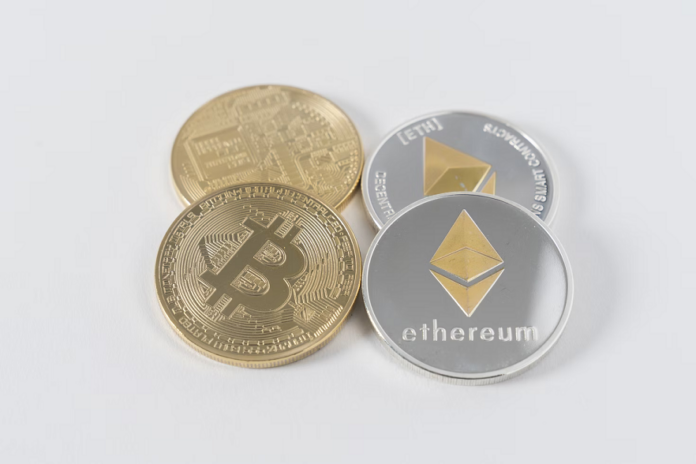
Ask any investor about their strategy and they will tell you that diversification is key to minimizing risk and achieving a high return – cryptocurrency is certainly no exception to this rule. The more options you have, the more control you have!
In this article, we will discuss the benefits of diversifying your cryptocurrency and digital securities portfolio to protect your investments and earn higher profit margins.
Why You Should Diversify Your Crypto Portfolio
Any type of investment, whether it is stocks, funds, cryptocurrency or something a little more niche, carries a reasonable amount of risk – so how do we go about protecting ourselves?
We cannot predict which way the markets will turn and there is every chance that a number of your investments could fail to go the way you intended. Therefore, it is always recommended to spread your investment across a range of projects, focusing on varying outcomes, so if one investment loses, another one wins.
In relation to cryptocurrency, this means investing in a variation of tokens and securities so if a number of tokens that are interlinked drop in value, other tokens with no connection will likely go up in price.
This means most or all of your initial stake will be protected, or you could even see a profit. Either way, you will still be able to continue trading, as opposed to investing all your money on one coin that unexpectedly suffers a significant loss.
Diversification simply means spreading your risk across a number of investments so the poor performance of one investment does not have a significant impact on your overall portfolio.
What Are The Different Types of Cryptocurrency?
Cryptocurrency can generally be broken down into seven different types but in the rapidly growing world of tech, the functions and purposes of crypto tokens could expand too – creating even more investment opportunities.
The 7 different types of cryptocurrency are:
- Security Tokens
Security tokens represent the digital form of a financial asset, such as stocks, bonds, funds, commodities, real estate, or a combination of different assets. A Digital security can realistically represent any physical, tradeable asset.
One example of this is the INX token, view here for more details.
- Asset-backed Tokens
Similar to a Security Token, but in this case specific assets have been tokenized to make them tradeable. These tokens could represent precious metals or commodities for example.
There a not many public examples of this type of token and there are some issues in terms of validation, but in theory, it is possible to create tokens that are backed by gold or other valuable commodities.
- Equity Tokens
Again there are no real public examples of this, but it can be achieved in theory. An Equity token allows the holder to have some ownership rights in a particular equity.
- Utility Tokens
A Utility Token has not been developed for profit, instead these tokens serve a particular function, such as verification or file storage. In the future, utility tokens could be used for a range of purposes, maybe even everyday occurrences such as paying to catch a train, hypothetically speaking…
- Non-Fungible Tokens (NFTs)
NFTs relate to a single, unique item that has value, helping to protect the item’s value and make it tradeable, so only the owner has control over it.
A good example of this is purchases within a computer game, as some in-game purchases can be very expensive and can increase in value, so using blockchain technology to protect the asset makes a lot of sense.
- Stablecoins
Stablecoins are usually the digital representation of a Fiat Currency, such as the US Dollar or the Euro. Therefore, whenever the US Dollar changes value in relation to other currencies, so does the Stablecoin that is tied to it.
There are 3 types of Stablecoins:
- Fiat – Backed by a Fiat currency
- Crypto – Backed by a cryptocurrency
- Non-Collateralized – Backed by a smart contract to maintain a constant price.
Tether is the most popular example of a Stablecoin which is tied to the value of the US Dollar.
- Miscellaneous
There are some crypto tokens that are difficult to categorize.
For example, the Dogecoin was developed as a joke, created as a parody of the overall cryptocurrency market. However, a large online community backed the coin and it became a huge success – it is now dubbed as the first ‘memecoin’.
Others are variations of utility coins but it is unclear what their actual purpose is from a public viewpoint, examples of this include Klay and Iota.
What Is The Most Popular Cryptocurrency?
The most popular type of cryptocurrency is, of course, Bitcoin.
Launched in 2009, Bitcoin has made major headlines and seen a significant rise in value, with a single coin reaching $68,000 in November 2021.
It may seem that investors have missed the boat when it comes to Bitcoin, however, it is still a wise investment and should definitely be considered when trying to build a diverse portfolio that requires some stability.
How To Invest In Cryptocurrency Successfully
Here are our 7 tips on how to successfully diversify your cryptocurrency portfolio:
- Invest in tokens that have a range of purposes, or use cases, for example, stablecoins, utility coins and tokens designed for profit.
- Invest across different blockchains, many blockchains compete with each other and have value in their own right, as each have their own specializations, making them attractive to differing parties.
- Invest in tokens and securities that are linked to different industries – decentralized finance and the video game industry are two of the most lucrative.
- Focus on market caps for short and long-term investments. The market cap represents the amount of tokens that have been mined and are in circulation.
A token such as Bitcoin has an extremely high market cap of over $800Bn, representing a stable, long-term investment. However, newer altcoins with a small market cap represent an opportunity for strong growth and profits.
- Focus on geography, countries like Portugal and El Salvador have embraced cryptocurrency, so projects from these countries would seem a sensible investment.
- Spread your investments across a range of assets. NFTs that represent digital art are one asset-type that is garnering a lot of attention.
- Include some riskier options in your portfolio. Investing in Bitcoin and stablecoins obviously provide security, but there will be little in the way of profit, so dedicate a small percentage of your portfolio to a few speculative tokens.
Where Can I Trade Crypto?
We would also recommend using a trusted and reputable cryptocurrency trading platform/ exchange to make your trades and investments. These platforms provide high levels of security & up-to-date information, in addition to fast, simple and low-cost transactions.











